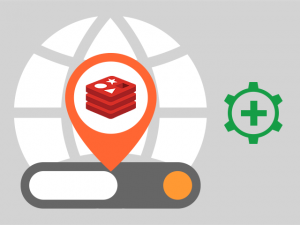Redis is now available on our hosting platform
 Databases are at the root of site and app creation, which is why newer and better DBMSs (database management systems) come along every once in a while to satisfy webmasters’ ever-expanding requirements.
Databases are at the root of site and app creation, which is why newer and better DBMSs (database management systems) come along every once in a while to satisfy webmasters’ ever-expanding requirements.
One such solution – Redis, provides a whole new, more elaborate take on database administration.
It offers webmasters greater data administration versatility by mixing in-memory storage with advanced data structures and different add-ons.
Redis, which is an acronym for REmote DIctionary Server, began as a VMware-funded initiative in March 2010 and is now managed by Redis Labs.
Today, it is one of the most talked-about database management systems and NoSQL database. Users have ranked it fourth in terms of satisfaction. It was also ranked 13th in the “Application and Data Tool” category in 2016, according to StackShare.
The main benefits of using Redis
A true advancement in the realm of database management – that’s what Redis represents. Following are some of the competitive advantages that have allowed it to outshine other well-known key/value-based NoSQL DBMSs:
Improved application performance
Redis is written in C. The time complexity of most commands is O(1).
It ordinarily stores the entire data set in memory, unlike traditional DBMSs that employ a disk storage mechanism instead.
The in-memory essence permits achieving maximum throughput (1,000,000’s of tasks/sec) and minimum latency (less than a millisecond), which, in turn, allows for more effective hardware usage.
Redis sidesteps marshaling/unmarshalling expenses by permitting access to discrete elements within objects.
Similarly, request-handling costs can be curtailed using database connection pools.
A simple-to-parse communication protocol permitting faster instruction processing can help attain an even bigger performance boost.
Suitable for different data processing purposes
Redis can fulfill various data processing objectives by means of a wide range of avilable modules, among them machine learning model serving and secondary indexing modules.
Rather than having to deploy and administer specialty databases for special processing necessities, devs can simply make use of the aforesaid modules.
Persistence
As already said, Redis typically stores the whole data set in memory. In order for persistence to be accomplished, however, the in-memory data has to be periodically moved to disk.
This can be achieved either by making ‘snapshots’ of the data set at specific times and saving them to disk in an .RDB file or by logging all database changes to an .AOF file (a.k.a. a ‘transaction journal’) in an append-only manner. Rewriting can be used to ensure that the latter doesn’t expand exponentially.
Just several secs of data will be lost if a full system crash occurs due to the fact that Redis copies it to a filesystem every 2000 ms by default.
How to enable Redis in the Hepsia Control Panel
In the Hepsia Control Panel, navigate to Advanced -> Redis. Once there, you can set up a new instance with the ‘Create Redis Instance’ button. A dialog box will appear prompting you to confirm your instance creation.
Once set up, the instance, along with the path for the Unix socket that will listen for incoming connections, will show up as displayed underneath.
You will then be able to bump up the amount of memory assigned to the newly created instance, to restart it and so on.
***
Redis comes by default with the Corporate and Enterprise web hosting packages, as well as with all OpenVZ VPS, semi-dedicated and dedicated servers, and is available as an add-on to the Starter, Business, and custom-built plans.

Leave a Reply